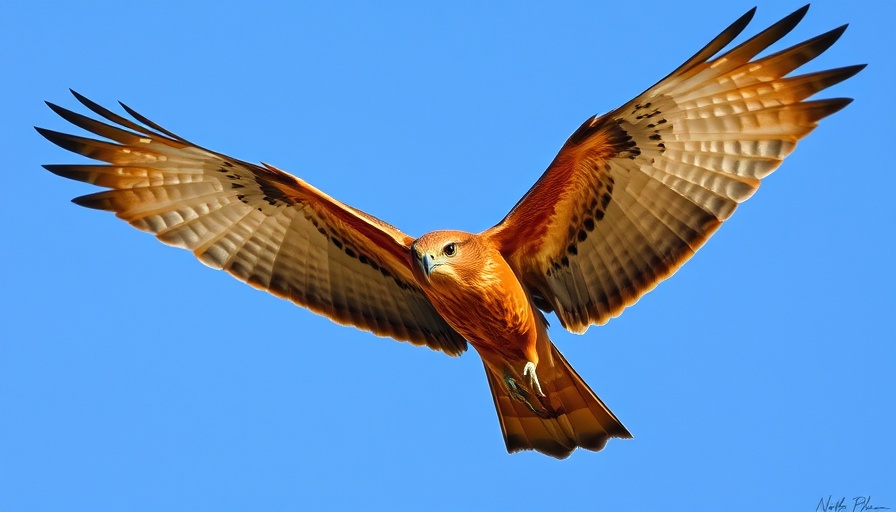
The Forgotten Majesty of the Red Goshawk
Once a predominant figure soaring through Australia’s skies, the red goshawk is now teetering on the brink of extinction. This elusive bird, identifiable by its stunning rufous plumage and impressive wingspan, has seen a drastic decline in its population, fading from landscapes it once ruled. Reports suggest that it has completely vanished from southeastern Australia, with recent estimates indicating fewer than 1,300 individuals remaining in the wild, a number that experts believe could be even lower.
Historical Significance and Habitat Loss
Historically, the red goshawk was widespread across Australia, from Sydney in the south to the tropical savannas of northern Queensland. First documented in the early 1800s, its population has been affected profoundly by habitat destruction. This critical loss is attributed to increasing agricultural development, logging, and mining activities, each encroaching on the bird's natural habitat. The red goshawk relies on specific environments characterized by tall trees along waterways, which are rapidly disappearing.
Climate Change: The Silent Threat
The impact of climate change exacerbates the situation for the red goshawk. Researchers express grave concerns over the rising temperatures and severe weather patterns that threaten juvenile birds during nesting seasons. Hotter conditions are not only detrimental to their habitats but also disrupt their breeding patterns, further complicating conservation efforts aimed at preserving this unique species. The birds’ survival is inextricably linked to their habitat, creating a worrying cycle where losing trees means losing the goshawks.
The Role of Indigenous Rangers
Efforts to save the red goshawk are increasingly relying on Indigenous knowledge and involvement. Indigenous rangers are being trained to monitor known nesting sites and track the bird’s movements across its remaining habitat. This grassroots approach harnesses local expertise and fosters community engagement, which are crucial for successful conservation. As guardians of the land, these rangers bring invaluable insights to the management of red goshawk habitats.
Urgent Action Needed
The time for urgent action is now. The current status of the red goshawk as endangered calls for immediate conservation measures to bolster its population. This includes halting habitat clearance and enforcing stricter environmental protections. Such initiatives would not only support the red goshawk but also benefit a range of other wildlife—demonstrating the interconnectedness of Australia’s ecosystems.
Community Involvement
For local communities, there’s a call to engage in the conversation about protecting the red goshawk. Understanding and appreciating the ecological value of this unique bird can inspire grassroots movements aimed at conservation. From educational workshops to community-led habitat restoration projects, individuals can play a pivotal role in the fight against extinction.
As we endeavor to save the rarest of Australia’s birds, it’s essential to remember the powerful connection between humans and nature. The red goshawk represents not only the beauty of our wildlife but also the cultural heritage tied to Australia’s diverse ecosystems.
Are you inspired to make a difference? Join the movement to protect our wildlife and contribute to conservation efforts aimed at preserving the red goshawk’s future!
 Add Row
Add Row  Add
Add 




Write A Comment